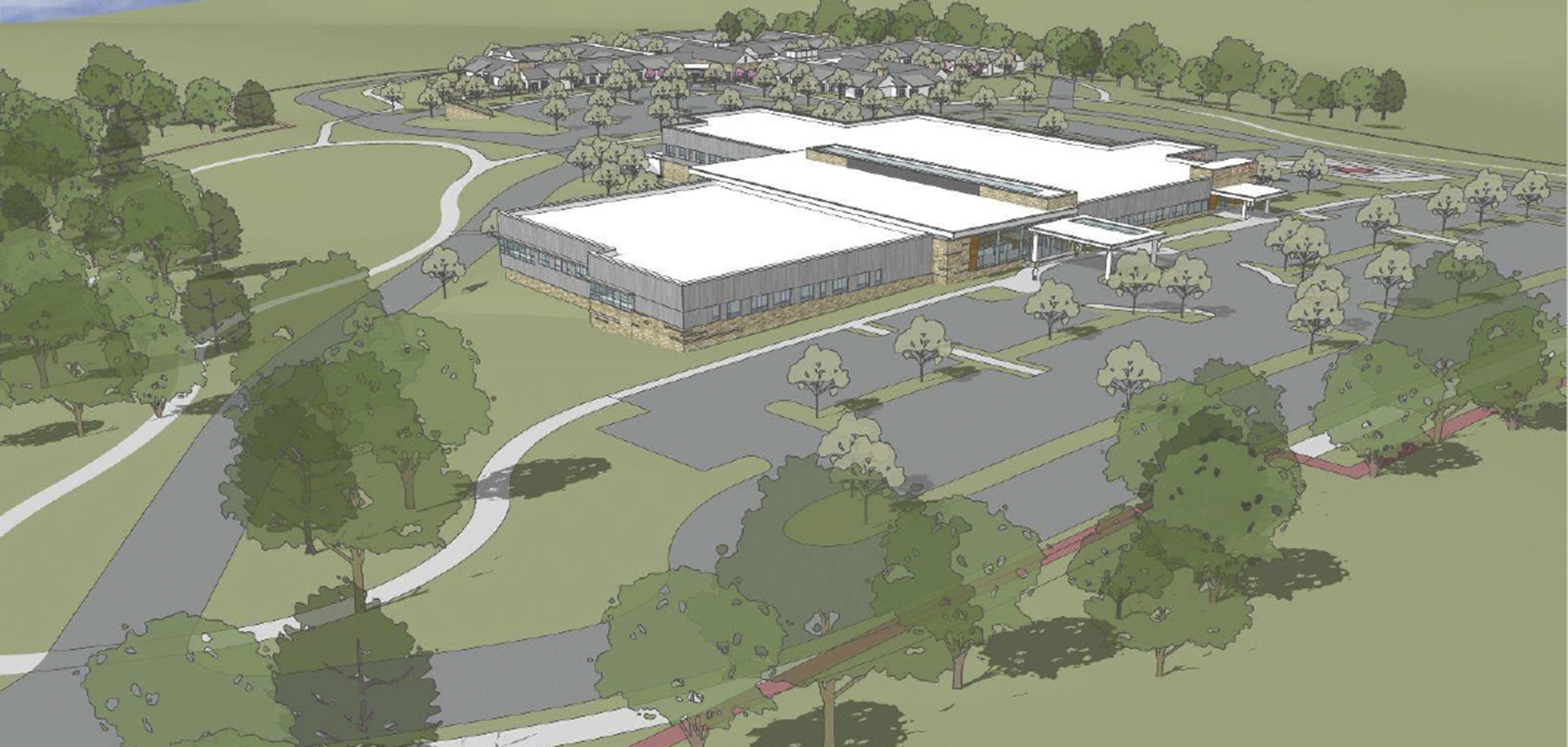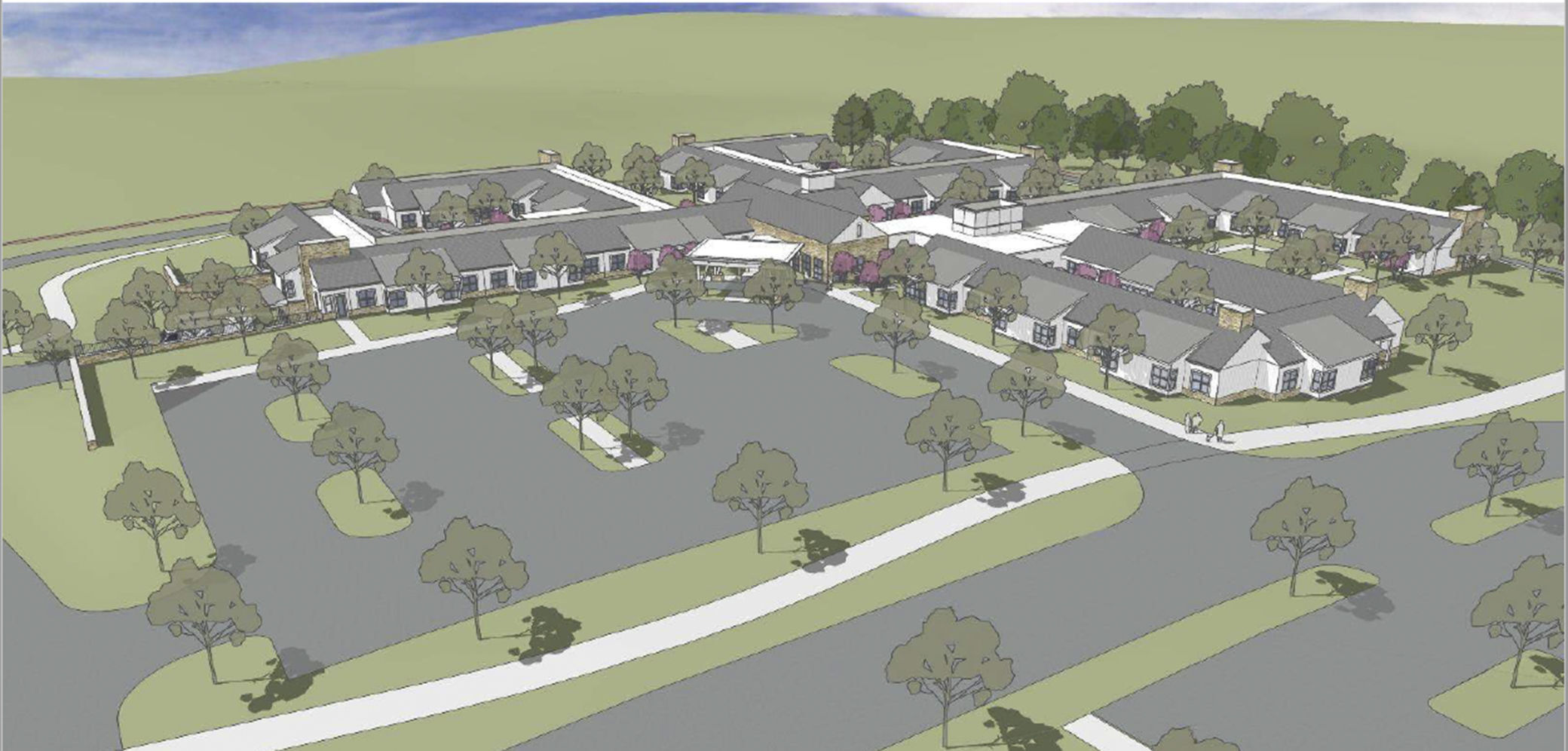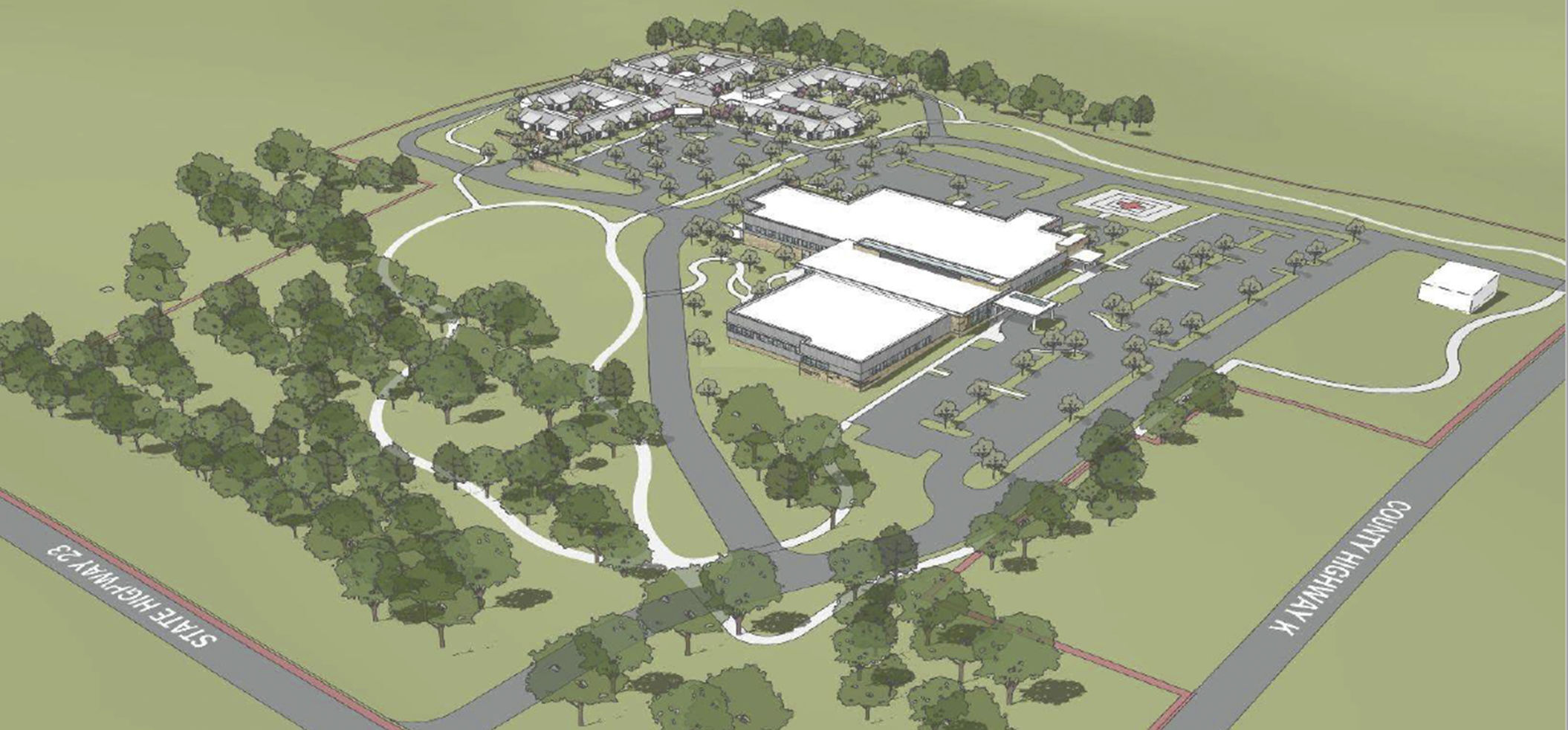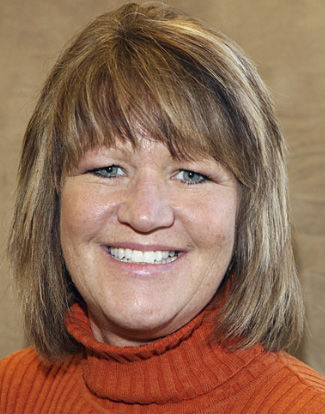DARLINGTON, Wis. — Lafayette County health care leaders have selected a 36-acre green space on which they hope to construct a new hospital and nursing home to replace the county’s aged facilities.
Before a land purchase can be finalized, administrators of Memorial Hospital of Lafayette County and Lafayette Manor will have to persuade the county Board of Supervisors to authorize the borrowing of tens of millions of dollars to finance the project.
“I think the assumption out there in the community is that voting ‘no’ for this, (then) we will continue to operate as we are currently doing,” said hospital CEO Kathy Kuepers. “We don’t have the capacity within our four walls to continue to operate this way. We are bursting at the seams.”
Administrators have spent more than one year assessing the demand for health care services in the county and the status of its current facilities.
Memorial Hospital, constructed in 1952, lacks room to expand and adjust to the sector’s increasing emphasis on outpatient care. It would cost at least $2.4 million to upgrade deficiencies, according to a recent study.
Meanwhile, Lafayette Manor, a 64-bed skilled nursing facility constructed in 1962, is in need of about $2 million in updates.
But such repairs at either facility would not address the inefficiencies presented by outdated designs nor the lack of space for expansion.
Consultants from firms Fehr-Graham & Associates and Eppstein Uhen Architects presented an environmental and architectural study at a public meeting Monday, proposing the construction of new facilities on a 36-acre tract, located at the southwest corner of Lafayette County K and Wisconsin 23 south of Darlington.
The land, currently used for crop farming, is owned by New Legacy LLC. The county obtained a right of first refusal in February.
The about-100,000-square-foot hospital plan includes space for 12 inpatient beds, an emergency room, ambulance garage, surgical services, radiology department, lab and pharmacy and Darlington Primary Care Clinic.
An 80,000-square-foot manor would contain 50 skilled nursing beds, broken into households, which include dens, sunrooms and outdoor courtyards. An additional 18 assisted-living beds would be located in the facility along with 12 beds for memory-care patients.
Administrators have declined to release cost estimates along with tax levy impacts until they present the information to the county board at its June meeting. Kuepers said the figures currently possessed by planners are still changing as designs are refined.
Administrators hope for the board to vote on the proposal in July.
To approve the project, 12 of the 16 supervisors must authorize the bonding. Wisconsin statute enables county boards to do so without a voter-backed ballot measure.
Consultants in 2020 provided a cost estimate based on an 80,000-square-foot integrated hospital and clinic on a green space. Without including site acquisition and equipment, costs totaled $38.4 million.
Meanwhile, a nursing home of the same capacity as the one under consideration was estimated to cost $13.1 million.
Administrators hope to borrow dollars through the U.S. Department of Agriculture, which would enable the county to bond without counting against its $63 million debt capacity.
That would save county resources for a third major capital project that is under study — the replacement of the county jail.
The proposed hospital and manor site, which features sweeping views of country vistas, includes enough space for future expansions and for each facility to operate on a single story, increasing its efficiency.
Administrators also believe the facilities will act as potential recruitment tools for new providers and open the door to possible service expansion. If the project does not move forward, Kuepers anticipates the opposite.
“It’s very important to have a health care campus in their community for quality of life and quality of health care,” she said. “Having to travel in emergency situations really changes the outcome.”
If the county board approves the project, groundbreaking could occur as soon as 2022. Construction would be a multi-year process.
“I personally am convinced that adding on to what we have is a Band-Aid approach,” Supervisor Scott Pedley said. “I think going out on the edge of the town is where the future is for us.”





